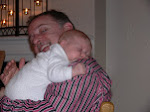I dream of a fascist world; The Girlfriend and I have to speak in code to avoid detection by the state. For dream-logic reasons this means using code words that begin with B. I need to tell her something vital for which our code word is “baby,” but I lose track of her. The stakes are planetary, existential. I’m running around the dreamscape thinking “Baby, baby, baby” when I awake, sweaty, hyperventilating. It’s 3:30 a.m.
Four nights this week I wake from nightmares. It’s hot in Brooklyn, temperatures through the night in the sticky 80s; we keep fans blowing, but my dreams are of feats and endeavors (track meets, hunting expeditions, tennis matches) at which I’m failing. The failures are unrecoverable: spikes fall from my track shoes, my rifle bends like butter, I challenge match point but evidence that my foe’s ball hit the line is marked by a puddle of pistachio ice cream. Failure means unexplained but certain trauma, not for me but someone else.
I dream while authoritarianism has arrived in America in ways I’d assumed would never occur in my lifetime. Its entrenchment remains uncertain; we may yet repel it. Trump, who likes to tweet trial balloons to see what he can get away with, got verbally smacked down Thursday, including by Republicans, when he pondered postponing the November election (which he has no power to do).
Federal law enforcement agents from a range of agencies (U.S. Marshals Service, the Federal Protective Service, U.S. Customs and Border Protection) agreed this week to leave Portland, Oregon, where they’d been dispatched by the Office of Homeland Security to protect a federal courthouse that demonstrators had vandalized with firecrackers and graffiti. (Oregon Gov. Kate Brown brokered the deal.) Agents wearing unmarked uniforms had been taking into custody Portland protestors in unmarked cars. (The New York Police Department took a protestor into an unmarked car on Tuesday.)
I’d been telling students for years about the Constitutional protection of habeas corpus, how police agencies are required by law to tell independent judges and the public when they arrest someone, how such accountability distinguishes the United States from authoritarian regimes who “disappear” their enemies. Now my high school classmates — nominally concerned about overweening governmental power — use social media to preen and cheer as feds crack skulls and shoot gas pellets and rubber bullets against protestors armed with fireworks, spray cans, laser pointers.
Trump wants to use U.S. Customs and Border Protection forces as a militarized force against cities with Democratic mayors (Chicago, New York, Oakland, Albuquerque) that have seen high levels of #BlackLivesMatter protests; he’s promised to send as many as 75,000 agents into such cities from what is now the country’s largest law-enforcement agency. CBP has its own elite unit, Bortac, trained to stop immigrant and drug smugglers but now ready operate on crowd control and protest management; within 100 miles of U.S. borders, they’re freed of some of the Constitutional protections that constrain other law enforcement officers.
Masha Gessen, whose New Yorker dispatches are essential Trump Era reading, locates a turning point in America’s evolution toward authoritarianism in the post-9/11 era, in our acceptance of the notion of a threatened “homeland” and the creation of the Department of Homeland Security. Now she equates our “anti-terrorist” policies to those of Putin’s Russia.
“The nation used to protect itself against other nations and their hostile military forces, but now it had to fear individuals,” Gessen writes. “This is the premise on which secret police forces are built. Their stated purpose is to find danger where normal human activity appears to be taking place.”
Gessen also notes the primary emotion in which Trumpians traffic: “What we are also seeing is a perfect storm of fear: the legacy of fear cultivated in the wake of 9/11, and the fear that Trump campaigned on in 2016 and continues to campaign on now."
I read about the fear not just among the protesters but among federal agents assigned to “police” them; the A.P. has a powerful story describing a night of Portland protests from both perspectives.
I see the fear in my former classmates’ fact-free descriptions of crazed “antifa,” “communist,” “socialist” “thugs,” whom they envision, based on federal government and right-wing media messaging, as destroying the core of America’s cities. (Portland’s protests were confined to a six-block area of downtown, damage limited to a few federal buildings.) The anti-Black, anti-immigrant racism inherent in their descriptions can’t be gainsaid; nor can their propaganda-fed anxiety.
CoronaWorld fills us with fear. Like those across the nation, my daughter’s Brooklyn public school ponders reopening in the fall; camps immediately form between parents desperate for the school to reopen (citing well-founded concerns for their children’s, their own mental health) and those desperate for it to remain closed (citing well-founded concerns for their children’s, their own physical health).
The plummeting economy fills us with fear. The pandemic wiped out five years of economic growth in the second quarter, to no good end; rather than using the pause to create testing and tracing systems to check the virus, we’re worse off than when we began the pause last spring. (Vanity Fair has a devastating account of federal inaction led by the president’s son-in-law.)
The national picture looks bleak; the local picture looks bleak.
“I’m scared, folks,” writes a New York state assembly member, about a coming wave of national evictions. (Renters at risk range from 1 in 5 in Vermont to almost 3 in 5 in Tennessee.) “I know people joke around about how I’m always seeing the future. But I am just seeing cause and effect. Basic economics....and the result. This isn’t a warning anymore. Please please please. We need to help people. We need to help our communities.”
Fear has become routinized, numbs our souls, keeps us distanced more than physical distancing ever could. My fevered dreams continue. Ninety-four days until Election Day.






